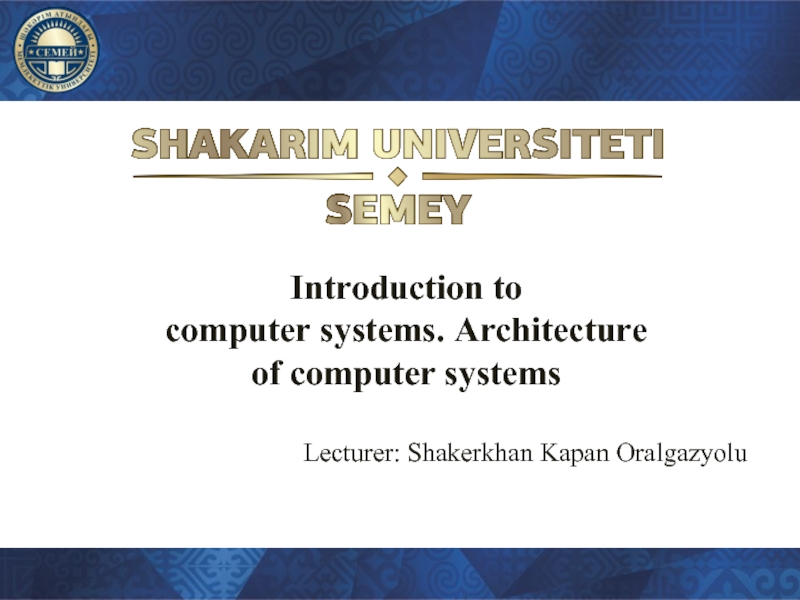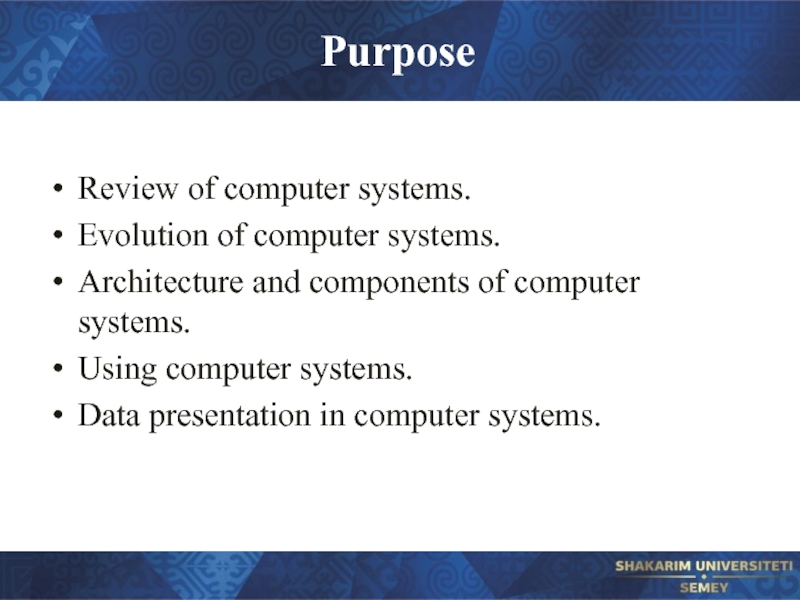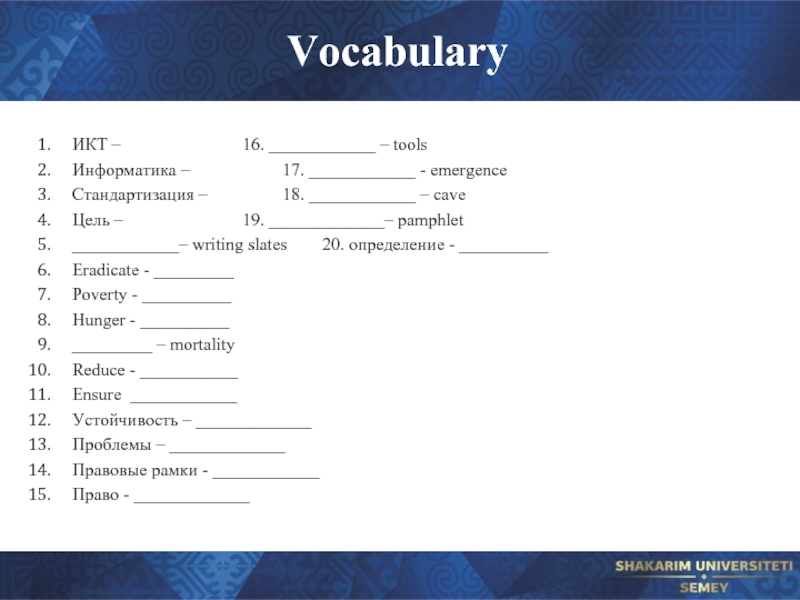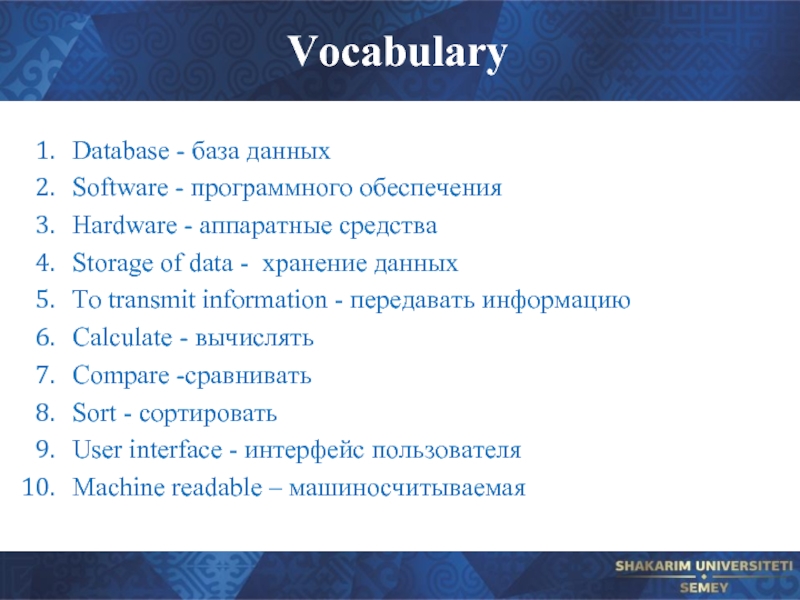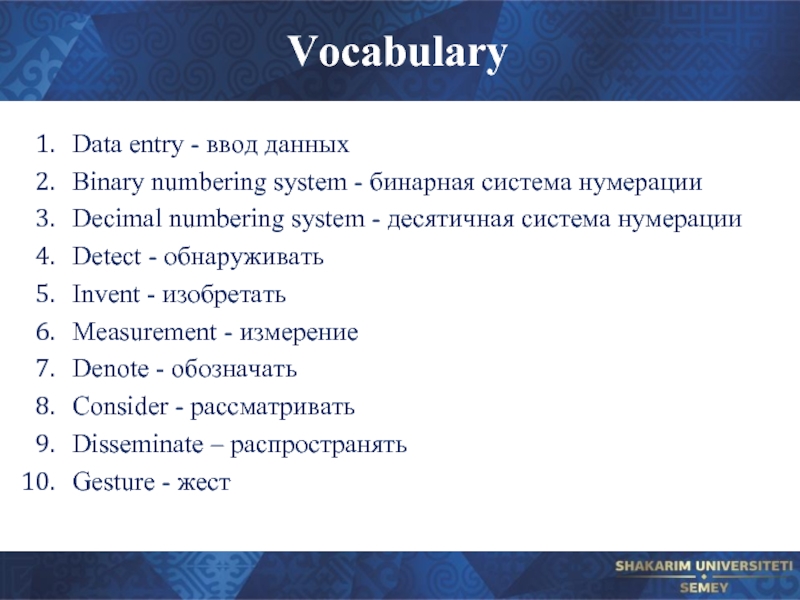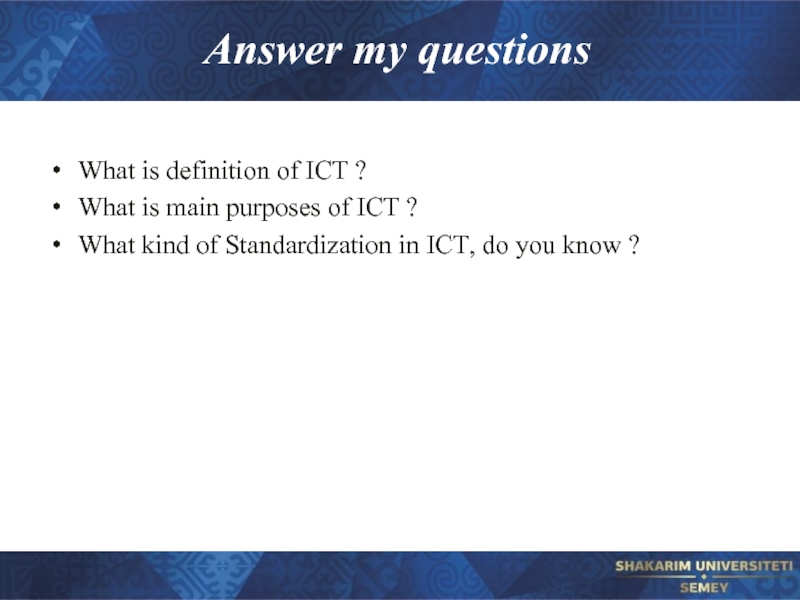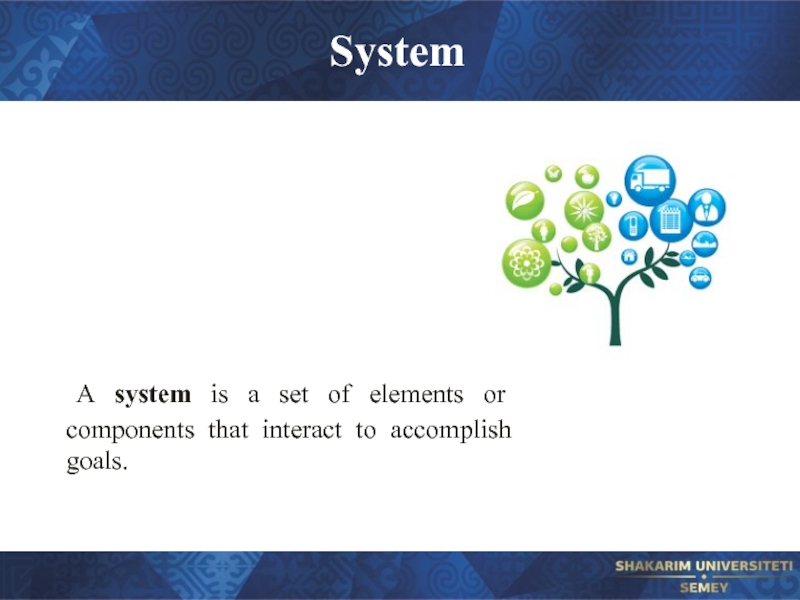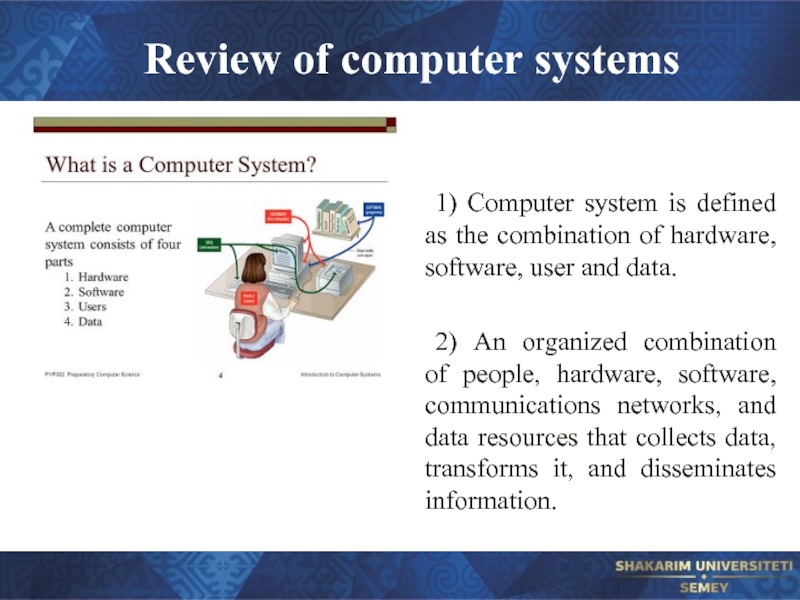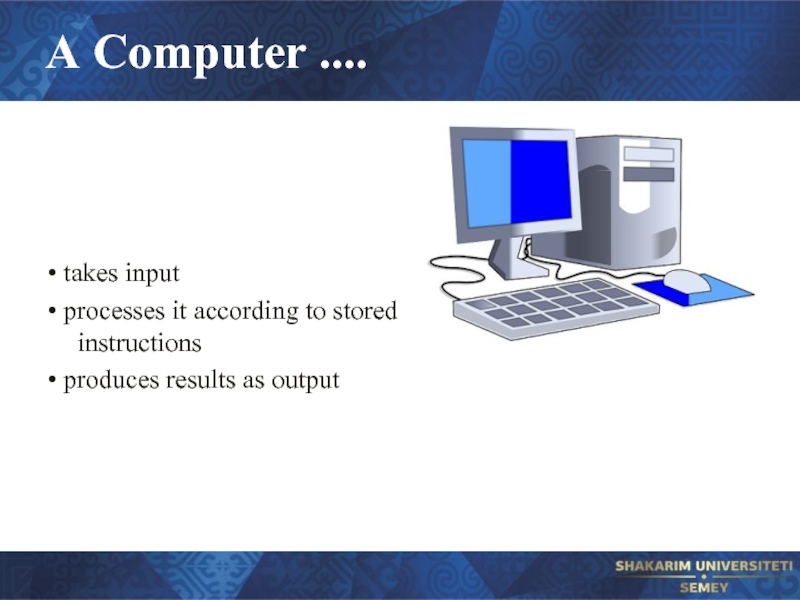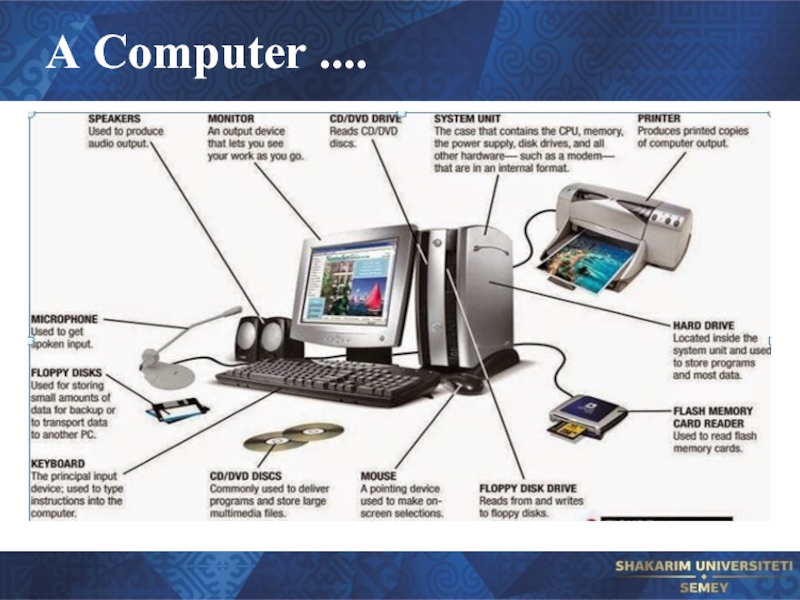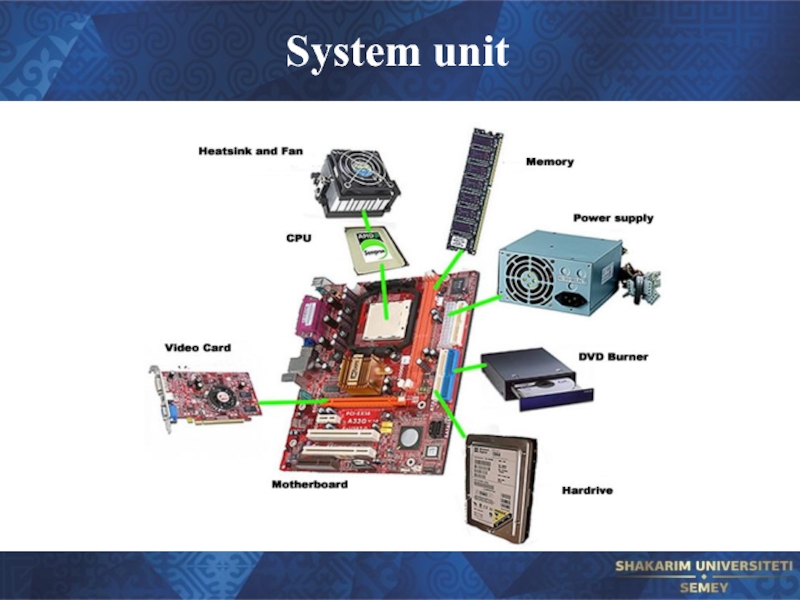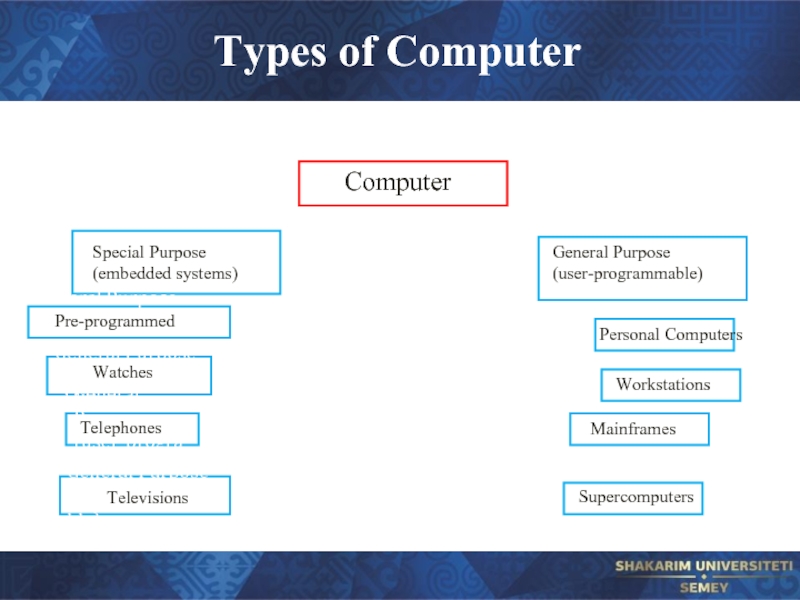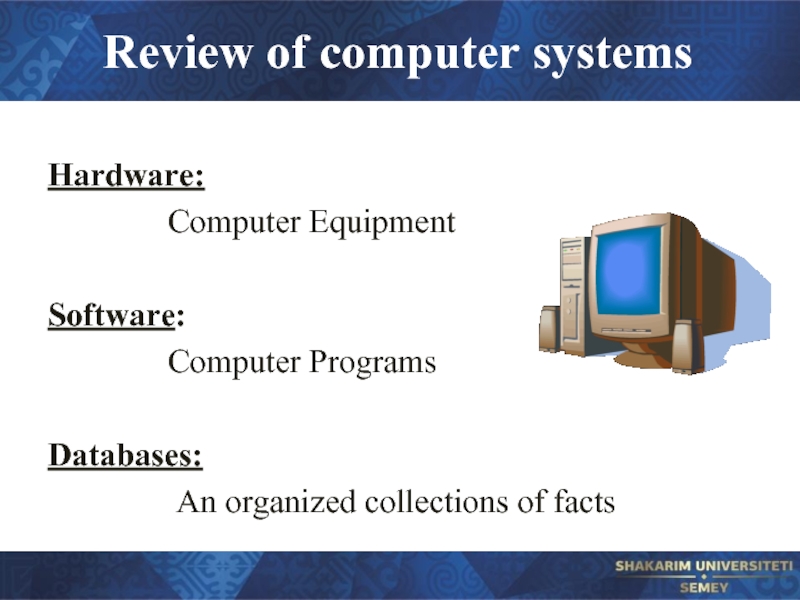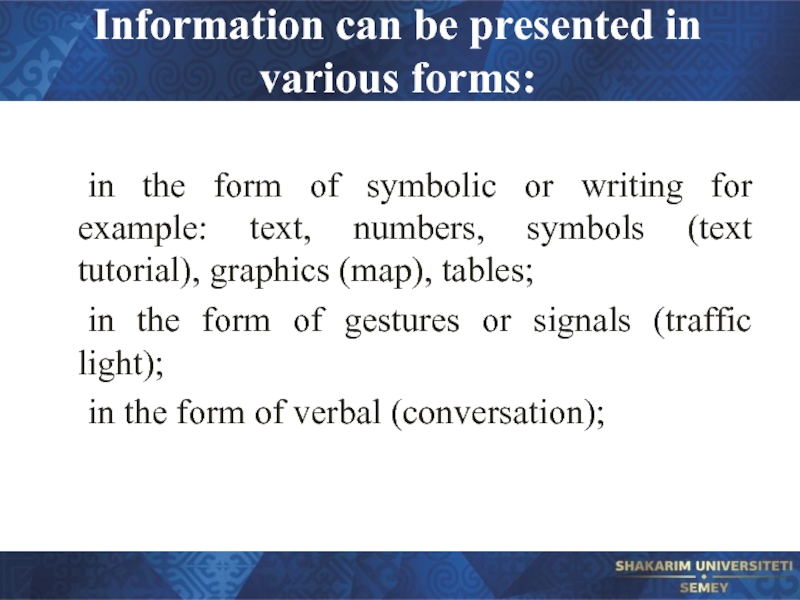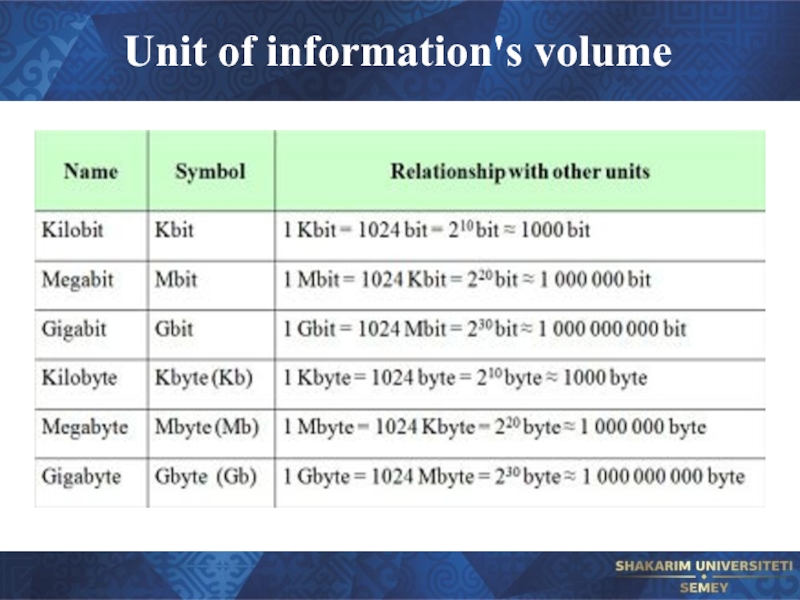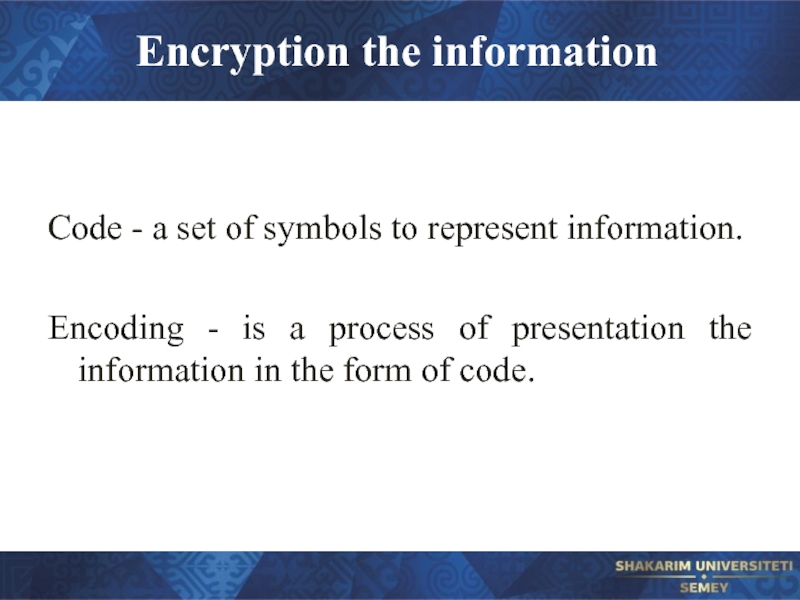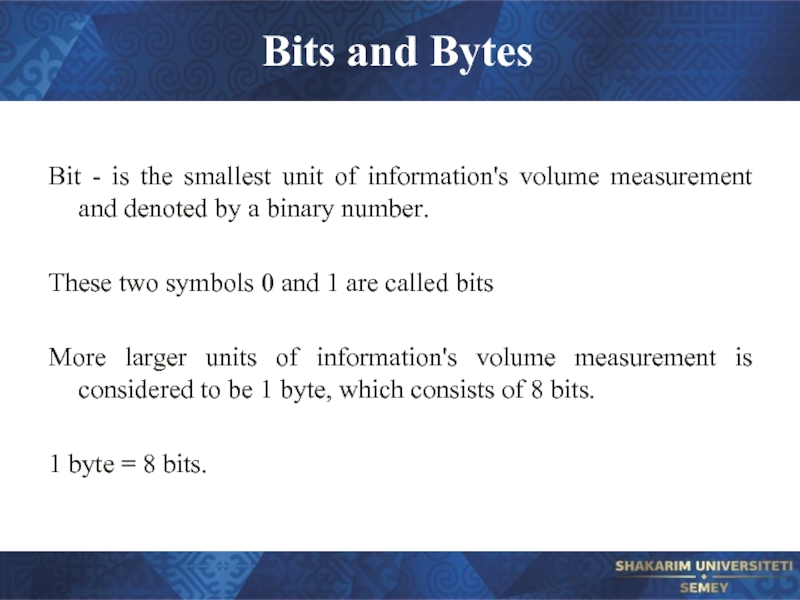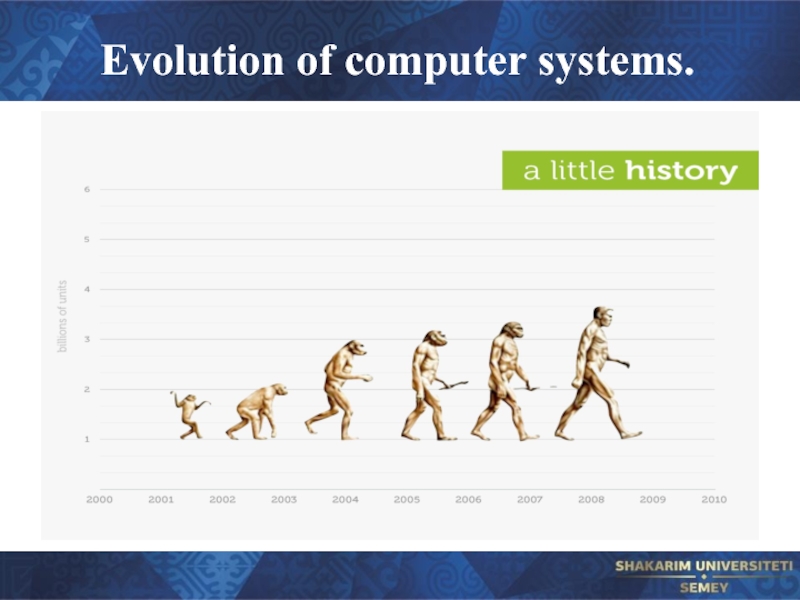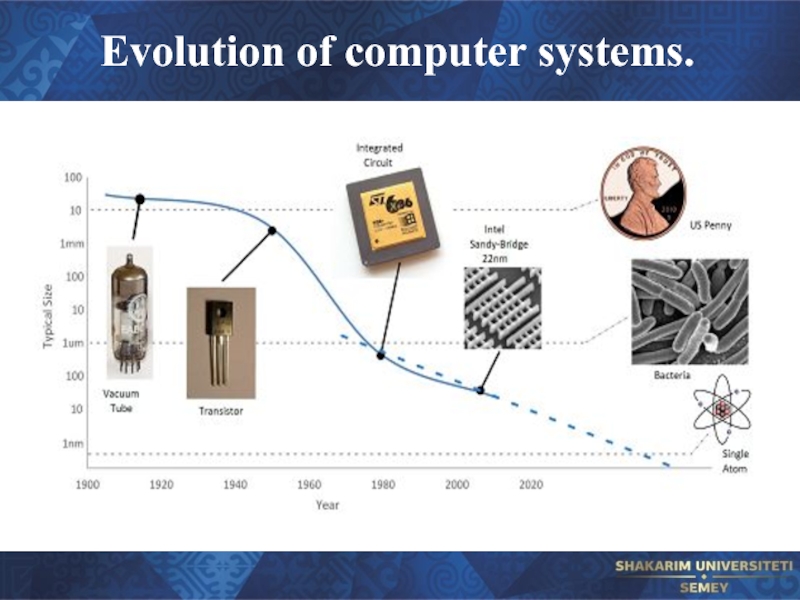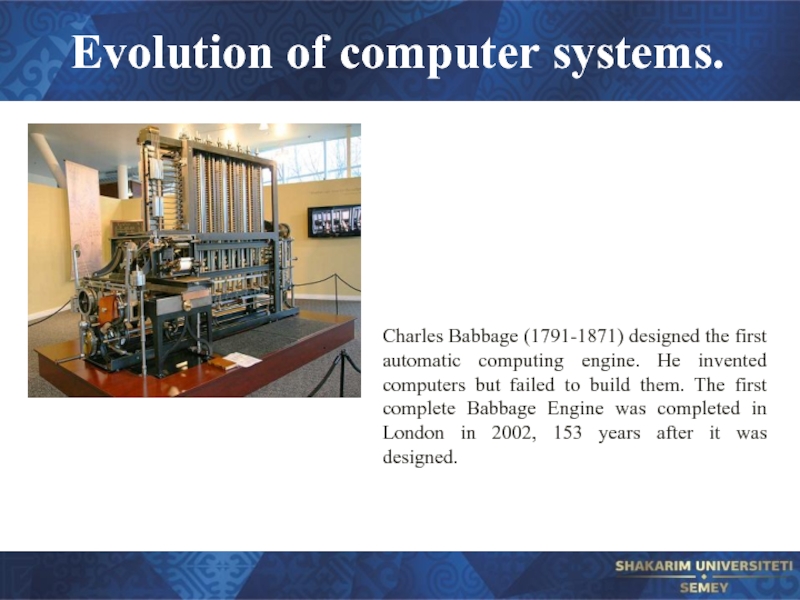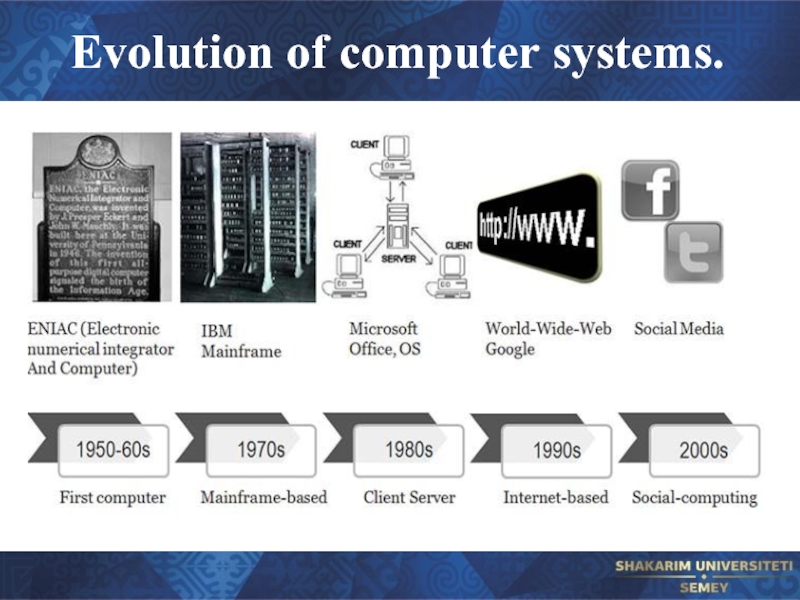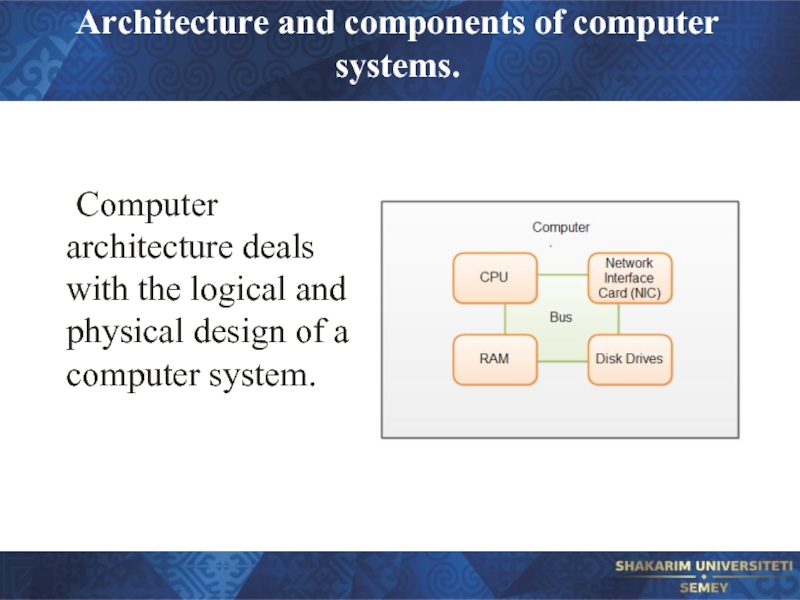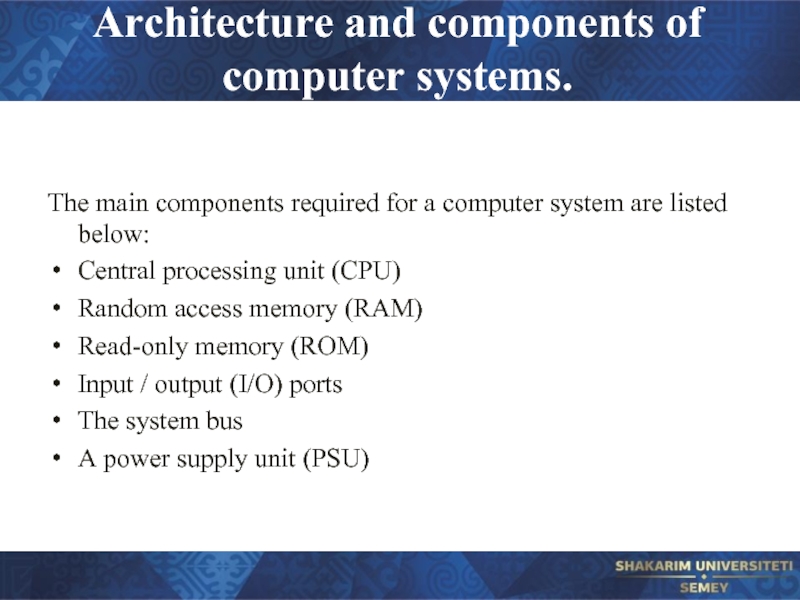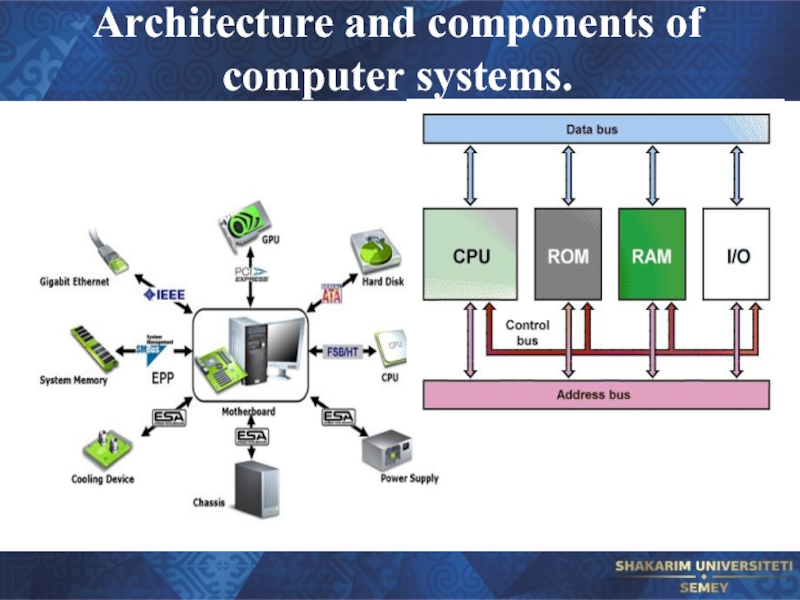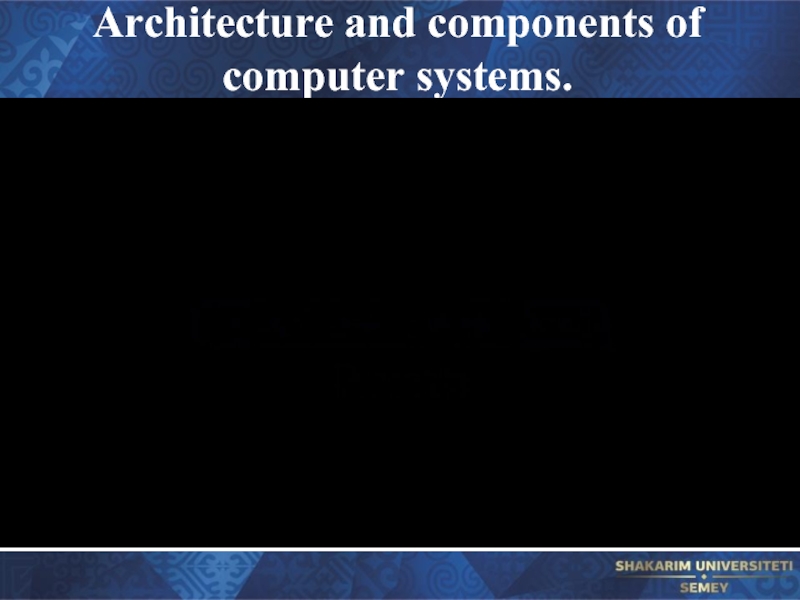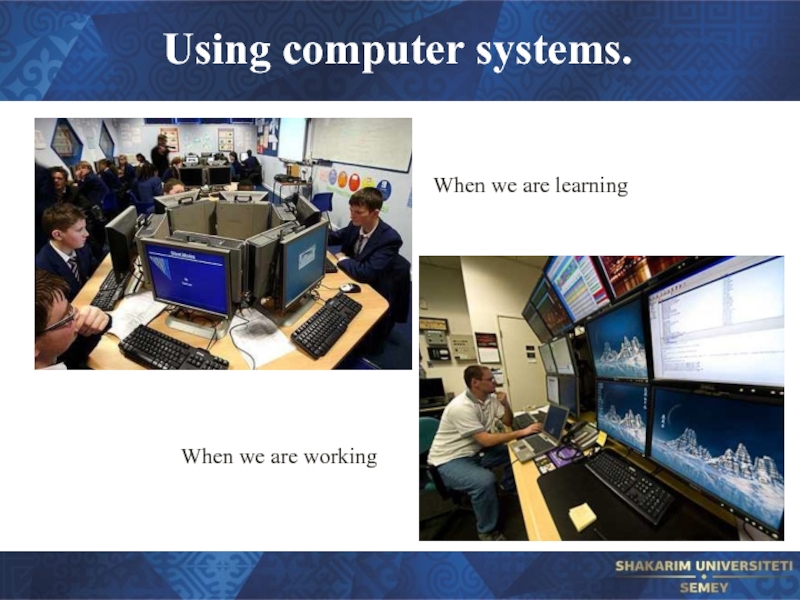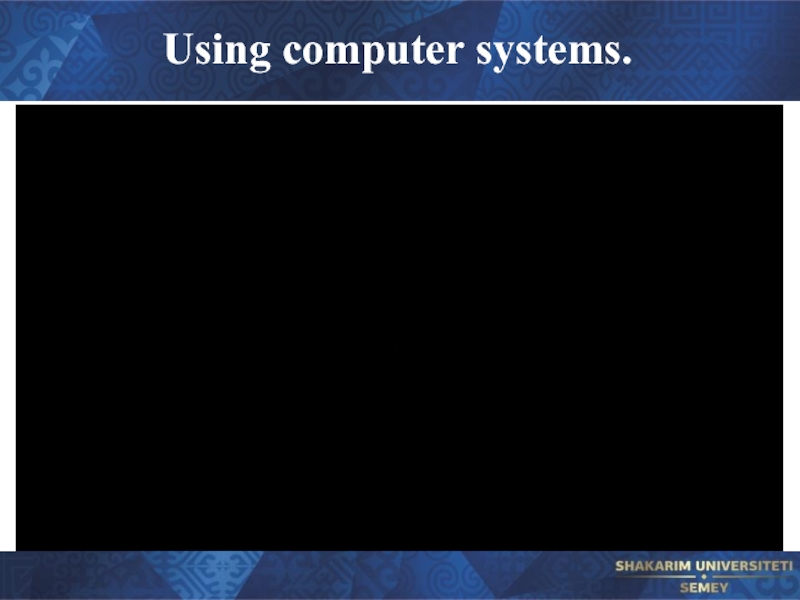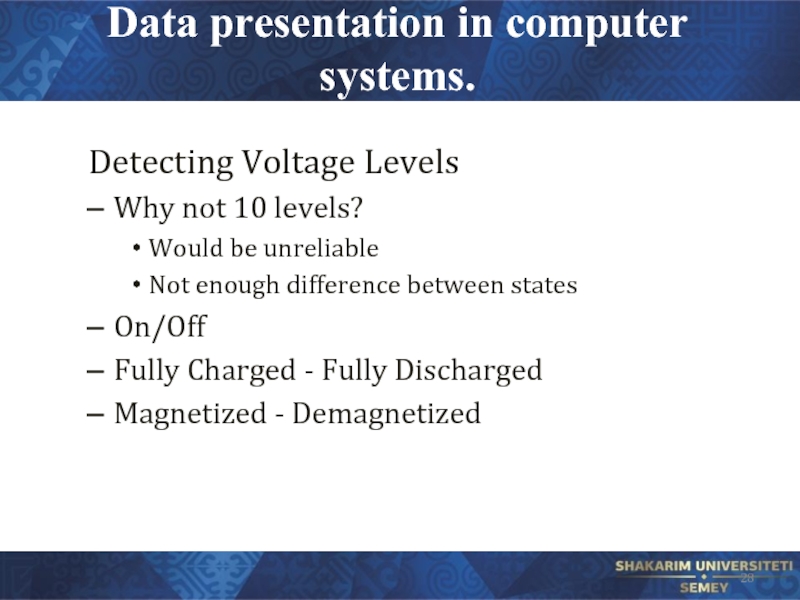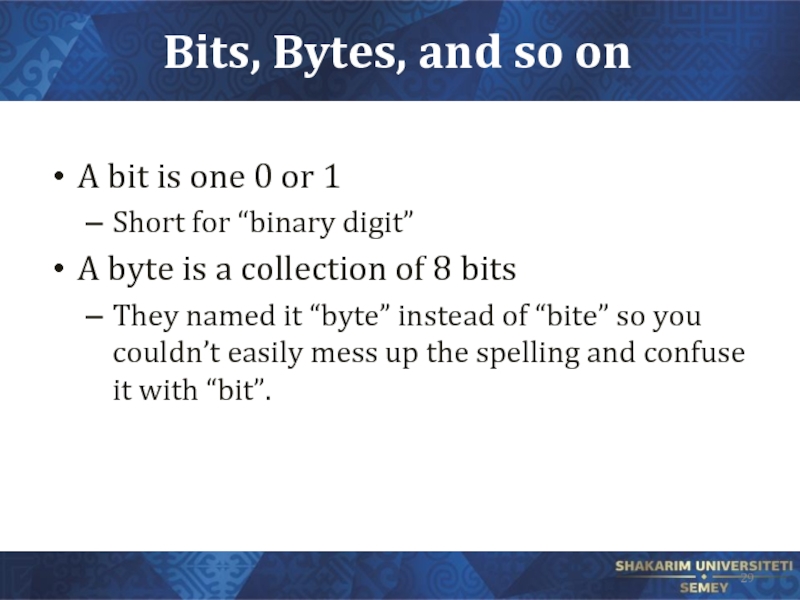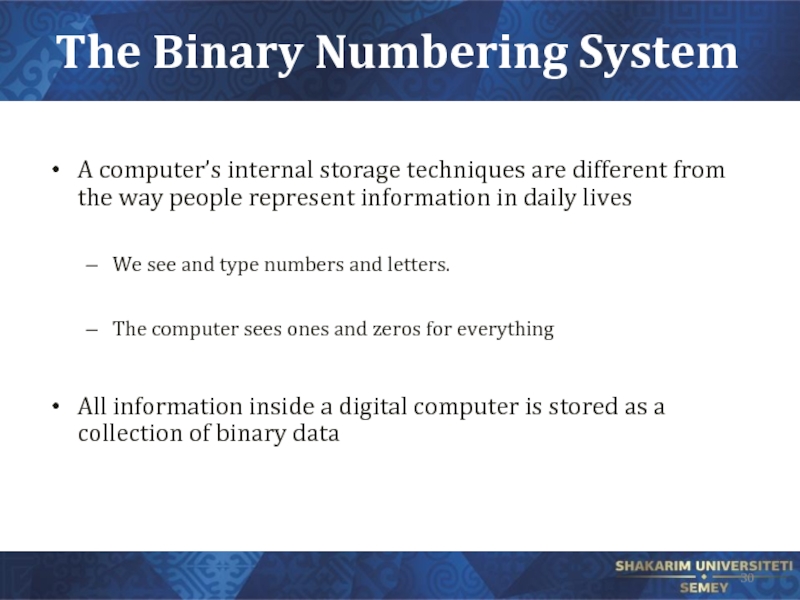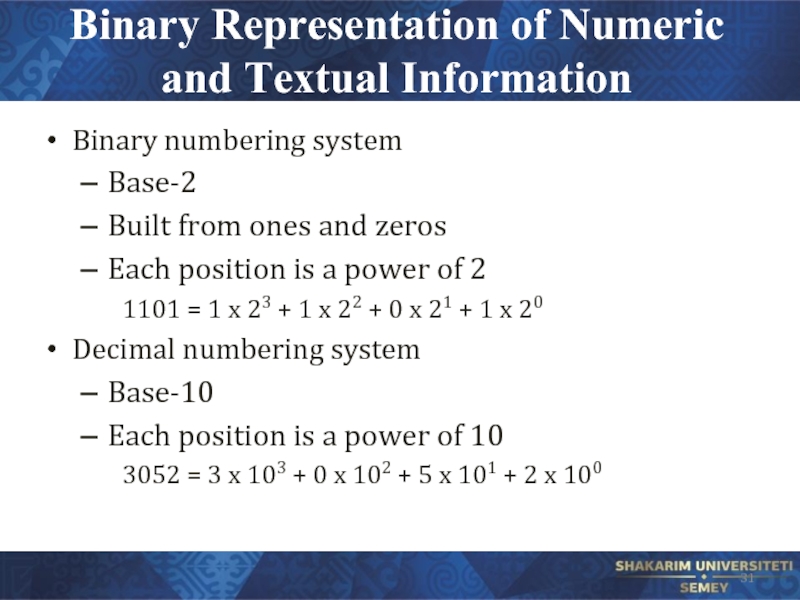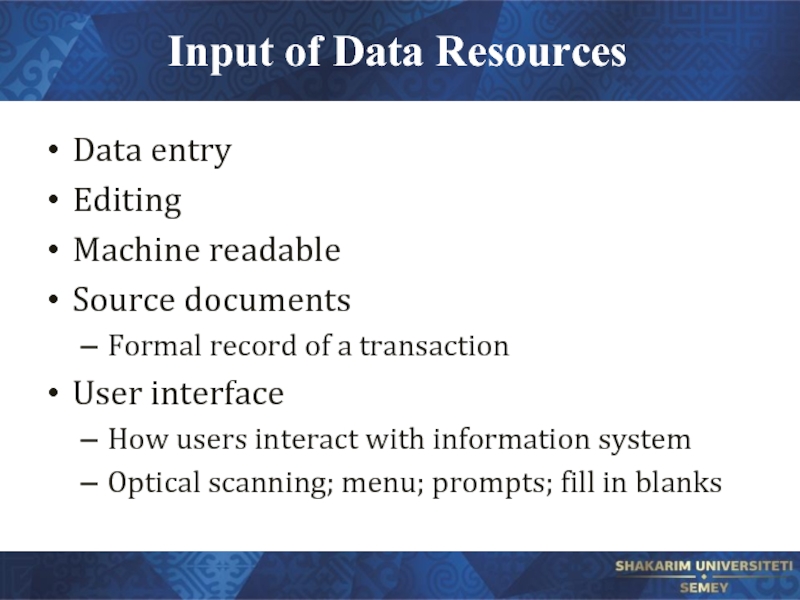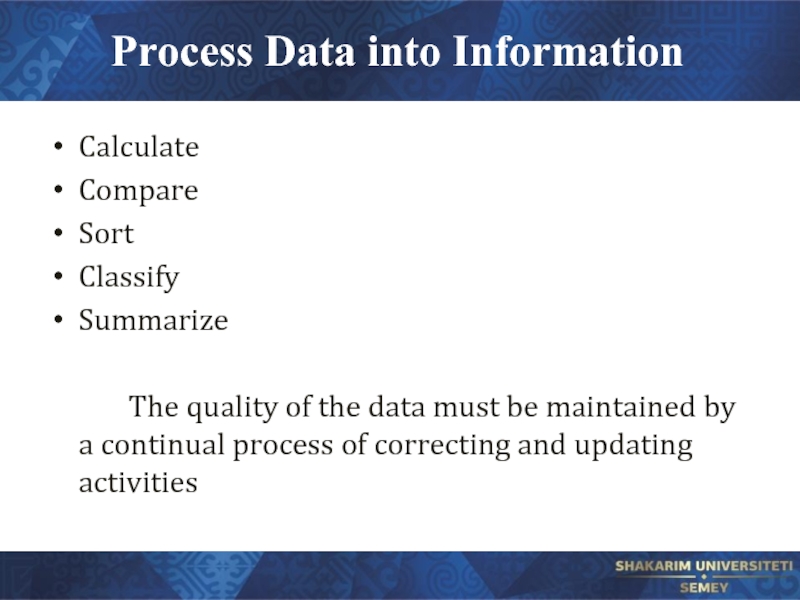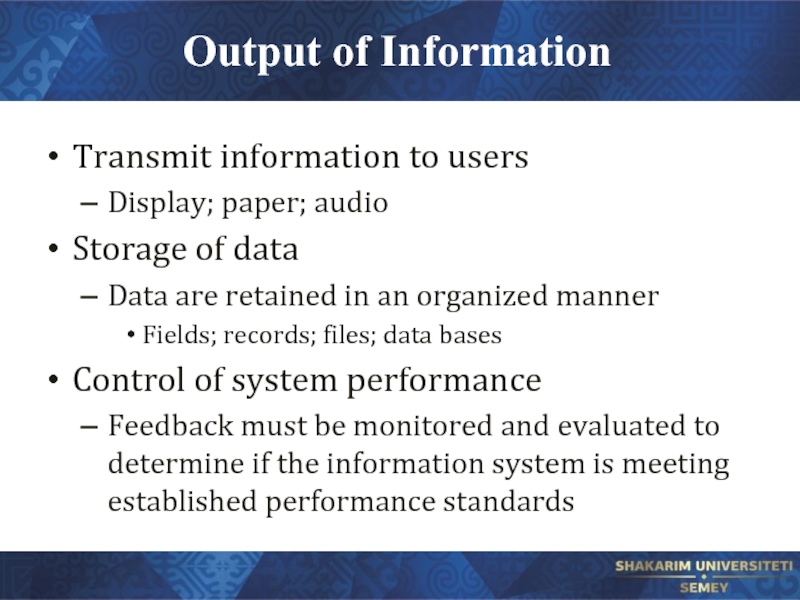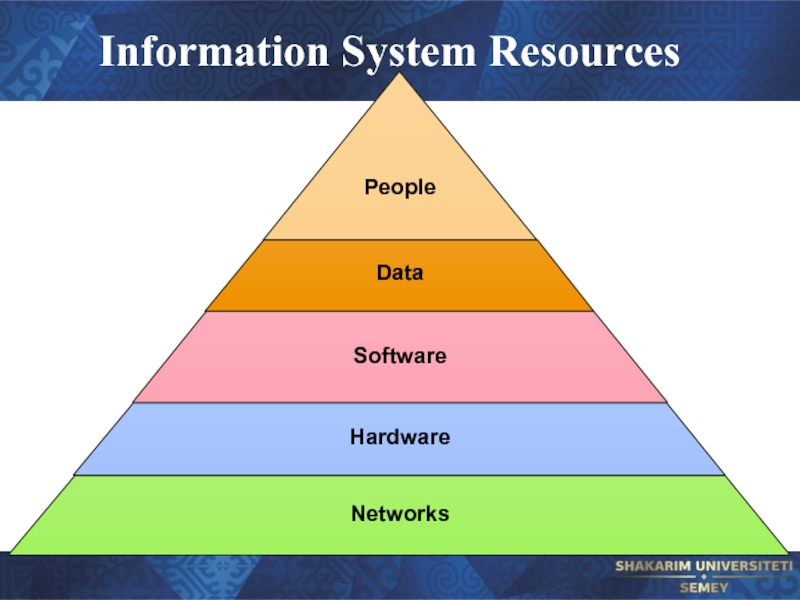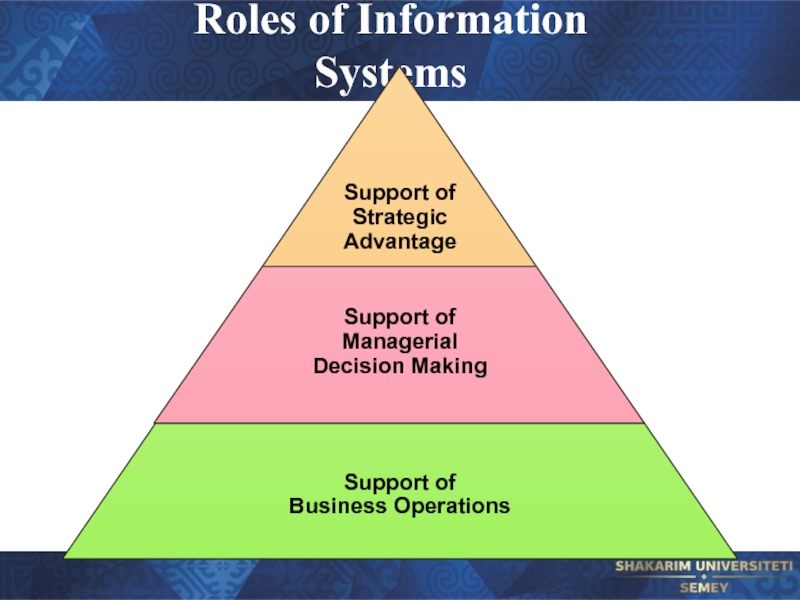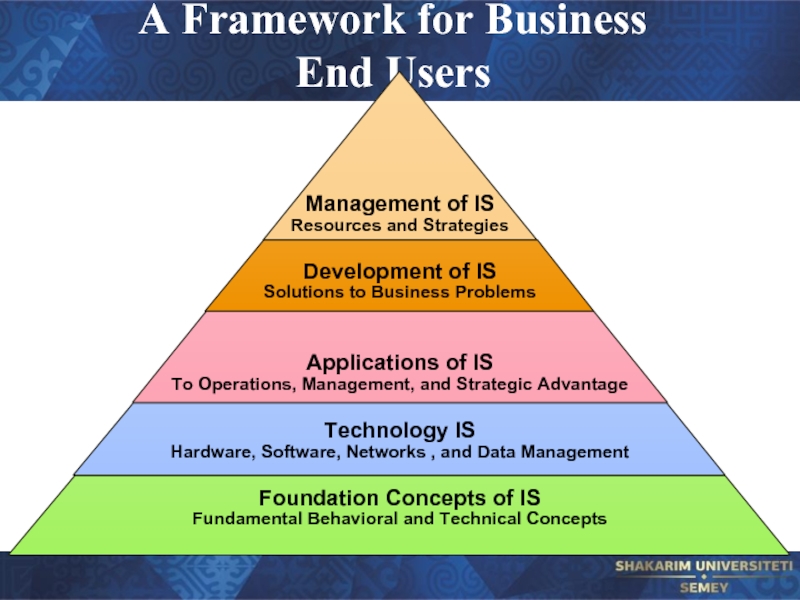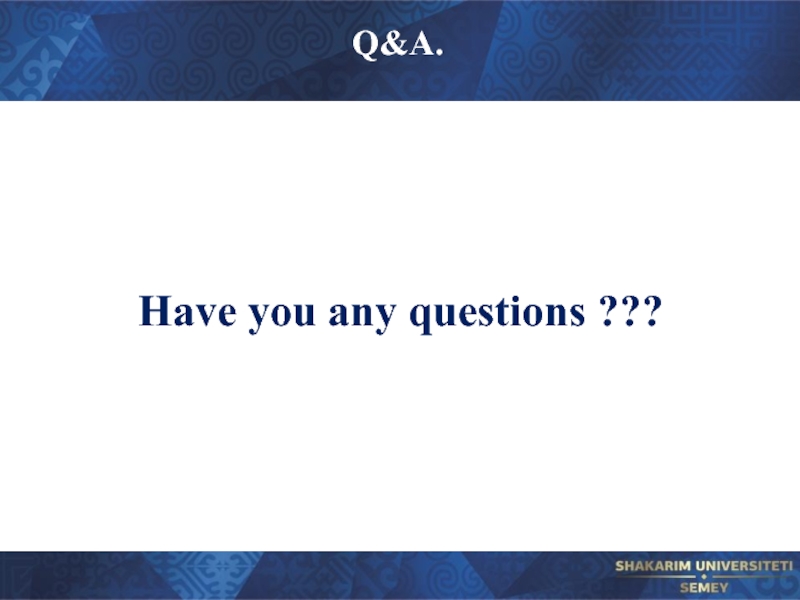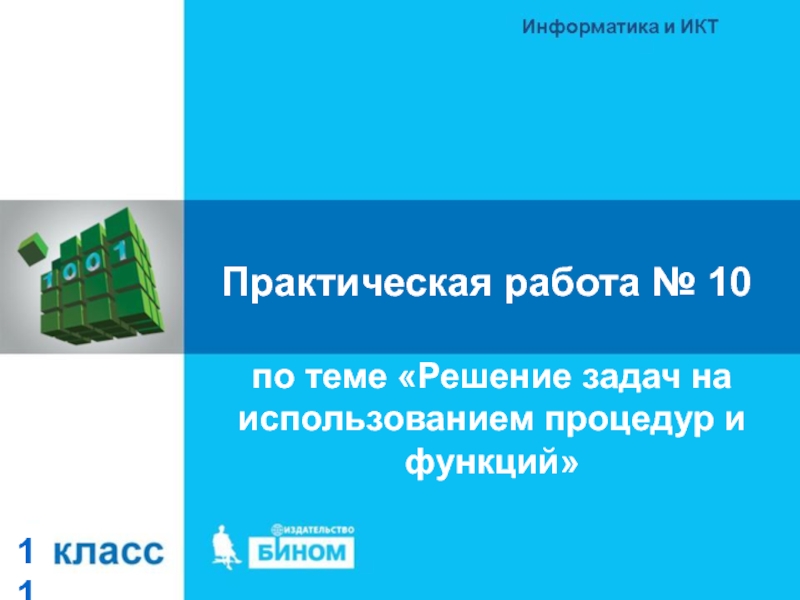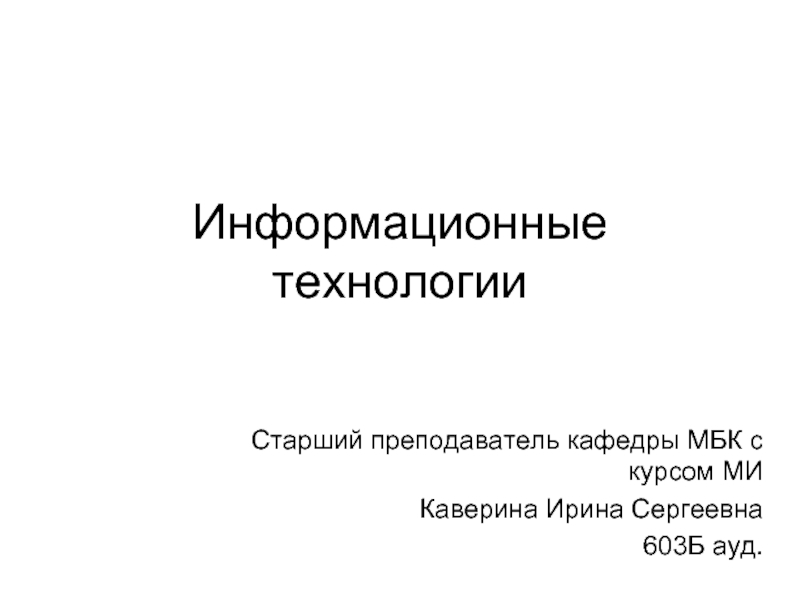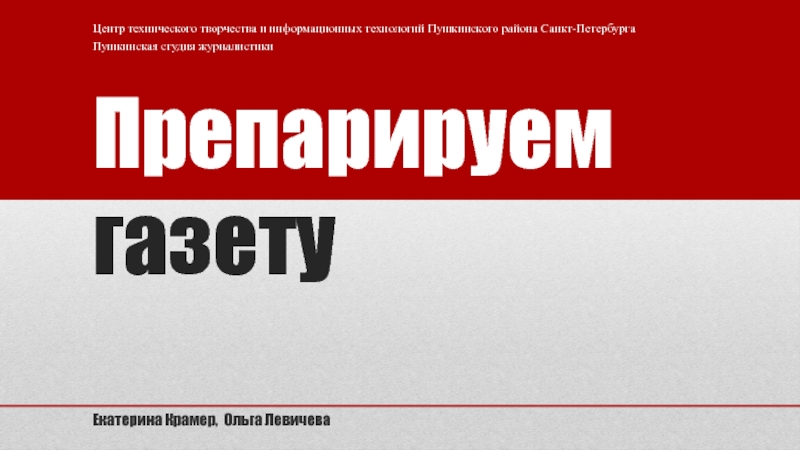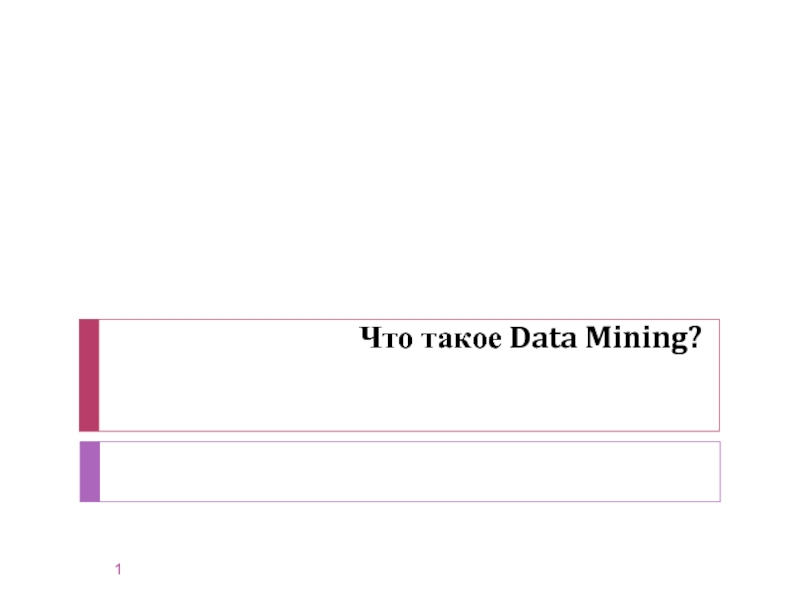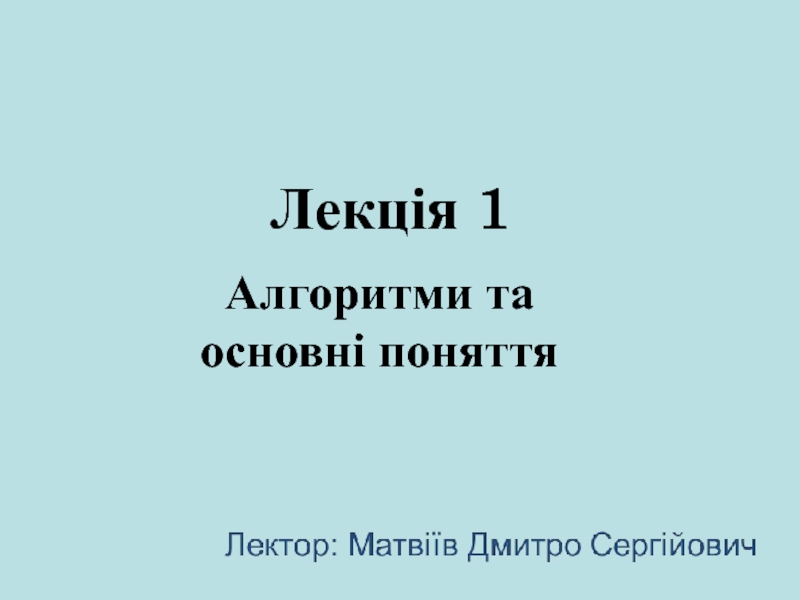- Главная
- Разное
- Дизайн
- Бизнес и предпринимательство
- Аналитика
- Образование
- Развлечения
- Красота и здоровье
- Финансы
- Государство
- Путешествия
- Спорт
- Недвижимость
- Армия
- Графика
- Культурология
- Еда и кулинария
- Лингвистика
- Английский язык
- Астрономия
- Алгебра
- Биология
- География
- Детские презентации
- Информатика
- История
- Литература
- Маркетинг
- Математика
- Медицина
- Менеджмент
- Музыка
- МХК
- Немецкий язык
- ОБЖ
- Обществознание
- Окружающий мир
- Педагогика
- Русский язык
- Технология
- Физика
- Философия
- Химия
- Шаблоны, картинки для презентаций
- Экология
- Экономика
- Юриспруденция
Introduction to computer systems. Architecture of computer systems презентация
Содержание
- 1. Introduction to computer systems. Architecture of computer systems
- 2. Purpose Review of computer systems. Evolution of
- 3. Vocabulary ИКТ – 16. ____________ – tools
- 4. Vocabulary Database - база данных Software -
- 5. Vocabulary Data entry - ввод данных Binary
- 6. Answer my questions What is
- 7. System A system is a
- 8. Review of computer systems 1)
- 9. A Computer .... • takes input •
- 10. A Computer ....
- 11. System unit
- 12. Types of Computer Computer
- 13. Review of computer systems Hardware: Computer Equipment
- 14. Information can be presented in various forms:
- 15. Unit of information's volume
- 16. Encryption the information Code - a set
- 17. Bits and Bytes Bit - is the
- 18. Evolution of computer systems.
- 19. Evolution of computer systems.
- 20. Evolution of computer systems. Charles Babbage (1791-1871)
- 21. Evolution of computer systems.
- 22. Architecture and components of computer systems.
- 23. Architecture and components of computer systems.
- 24. Architecture and components of computer systems.
- 25. Architecture and components of computer systems.
- 26. Using computer systems. When we are learning When we are working
- 27. Using computer systems.
- 28. Detecting Voltage Levels Why not 10 levels?
- 29. Bits, Bytes, and so on A bit
- 30. The Binary Numbering System A computer’s internal
- 31. Binary Representation of Numeric and Textual Information
- 32. Input of Data Resources Data entry Editing
- 33. Process Data into Information Calculate Compare Sort
- 34. Output of Information Transmit information to users
- 36. Roles of Information Systems
- 38. Q&A. Have you any questions ???
- 39. Thank you for your attention !!!
Слайд 1Introduction to
computer systems. Architecture
of computer systems
Lecturer: Shakerkhan Kapan Oralgazyolu
Слайд 2Purpose
Review of computer systems.
Evolution of computer systems.
Architecture and components of computer
systems.
Using computer systems.
Data presentation in computer systems.
Using computer systems.
Data presentation in computer systems.
Слайд 3Vocabulary
ИКТ – 16. ____________ – tools
Информатика – 17. ____________ - emergence
Стандартизация
– 18. ____________ – cave
Цель – 19. _____________– pamphlet
____________– writing slates 20. определение - __________
Eradicate - _________
Poverty - __________
Hunger - __________
_________ – mortality
Reduce - ___________
Ensure ____________
Устойчивость – _____________
Проблемы – _____________
Правовые рамки - ____________
Право - _____________
Цель – 19. _____________– pamphlet
____________– writing slates 20. определение - __________
Eradicate - _________
Poverty - __________
Hunger - __________
_________ – mortality
Reduce - ___________
Ensure ____________
Устойчивость – _____________
Проблемы – _____________
Правовые рамки - ____________
Право - _____________
Слайд 4Vocabulary
Database - база данных
Software - программного обеспечения
Hardware - аппаратные средства
Storage of
data - хранение данных
To transmit information - передавать информацию
Calculate - вычислять
Compare -сравнивать
Sort - сортировать
User interface - интерфейс пользователя
Machine readable – машиносчитываемая
To transmit information - передавать информацию
Calculate - вычислять
Compare -сравнивать
Sort - сортировать
User interface - интерфейс пользователя
Machine readable – машиносчитываемая
Слайд 5Vocabulary
Data entry - ввод данных
Binary numbering system - бинарная система нумерации
Decimal
numbering system - десятичная система нумерации
Detect - обнаруживать
Invent - изобретать
Measurement - измерение
Denote - обозначать
Consider - рассматривать
Disseminate – распространять
Gesture - жест
Detect - обнаруживать
Invent - изобретать
Measurement - измерение
Denote - обозначать
Consider - рассматривать
Disseminate – распространять
Gesture - жест
Слайд 6
Answer my questions
What is definition of ICT ?
What is main purposes
of ICT ?
What kind of Standardization in ICT, do you know ?
What kind of Standardization in ICT, do you know ?
Слайд 8Review of computer systems
1) Computer system is defined as the combination
of hardware, software, user and data.
2) An organized combination of people, hardware, software, communications networks, and data resources that collects data, transforms it, and disseminates information.
2) An organized combination of people, hardware, software, communications networks, and data resources that collects data, transforms it, and disseminates information.
Слайд 9A Computer ....
• takes input
• processes it according to stored instructions
•
produces results as output
Слайд 12Types of Computer
Computer
General Purpose
(user-programmable)
Special Purpose
(embedded systems)
General Purpose (user-programmable)
General Purpose
(user-programmable)
Pre-programmed
General Purpose
(user-programmable)
Watches
General Purpose
(user-programmable)
Telephones
General
Purpose
(user-programmable)
(user-programmable)
Televisions
Personal Computers
Workstations
Mainframes
Supercomputers
Слайд 13Review of computer systems
Hardware:
Computer Equipment
Software:
Computer Programs
Databases:
An organized collections of facts
Слайд 14Information can be presented in various forms:
in the form of symbolic
or writing for example: text, numbers, symbols (text tutorial), graphics (map), tables;
in the form of gestures or signals (traffic light);
in the form of verbal (conversation);
in the form of gestures or signals (traffic light);
in the form of verbal (conversation);
Слайд 16Encryption the information
Code - a set of symbols to represent information.
Encoding
- is a process of presentation the information in the form of code.
Слайд 17Bits and Bytes
Bit - is the smallest unit of information's volume
measurement and denoted by a binary number.
These two symbols 0 and 1 are called bits
More larger units of information's volume measurement is considered to be 1 byte, which consists of 8 bits.
1 byte = 8 bits.
These two symbols 0 and 1 are called bits
More larger units of information's volume measurement is considered to be 1 byte, which consists of 8 bits.
1 byte = 8 bits.
Слайд 20Evolution of computer systems.
Charles Babbage (1791-1871) designed the first automatic computing
engine. He invented computers but failed to build them. The first complete Babbage Engine was completed in London in 2002, 153 years after it was designed.
Слайд 22
Architecture and components of computer systems.
Computer architecture deals with the
logical and physical design of a computer system.
Слайд 23
Architecture and components of computer systems.
The main components required for
a computer system are listed below:
Central processing unit (CPU)
Random access memory (RAM)
Read-only memory (ROM)
Input / output (I/O) ports
The system bus
A power supply unit (PSU)
Central processing unit (CPU)
Random access memory (RAM)
Read-only memory (ROM)
Input / output (I/O) ports
The system bus
A power supply unit (PSU)
Слайд 28 Detecting Voltage Levels
Why not 10 levels?
Would be unreliable
Not enough difference between
states
On/Off
Fully Charged - Fully Discharged
Magnetized - Demagnetized
On/Off
Fully Charged - Fully Discharged
Magnetized - Demagnetized
Data presentation in computer systems.
Слайд 29Bits, Bytes, and so on
A bit is one 0 or 1
Short
for “binary digit”
A byte is a collection of 8 bits
They named it “byte” instead of “bite” so you couldn’t easily mess up the spelling and confuse it with “bit”.
A byte is a collection of 8 bits
They named it “byte” instead of “bite” so you couldn’t easily mess up the spelling and confuse it with “bit”.
Слайд 30The Binary Numbering System
A computer’s internal storage techniques are different from
the way people represent information in daily lives
We see and type numbers and letters.
The computer sees ones and zeros for everything
All information inside a digital computer is stored as a collection of binary data
We see and type numbers and letters.
The computer sees ones and zeros for everything
All information inside a digital computer is stored as a collection of binary data
Слайд 31Binary Representation of Numeric and Textual Information
Binary numbering system
Base-2
Built from ones
and zeros
Each position is a power of 2
1101 = 1 x 23 + 1 x 22 + 0 x 21 + 1 x 20
Decimal numbering system
Base-10
Each position is a power of 10
3052 = 3 x 103 + 0 x 102 + 5 x 101 + 2 x 100
Each position is a power of 2
1101 = 1 x 23 + 1 x 22 + 0 x 21 + 1 x 20
Decimal numbering system
Base-10
Each position is a power of 10
3052 = 3 x 103 + 0 x 102 + 5 x 101 + 2 x 100
Слайд 32Input of Data Resources
Data entry
Editing
Machine readable
Source documents
Formal record of a transaction
User
interface
How users interact with information system
Optical scanning; menu; prompts; fill in blanks
How users interact with information system
Optical scanning; menu; prompts; fill in blanks
Слайд 33Process Data into Information
Calculate
Compare
Sort
Classify
Summarize
The quality of the data must be maintained
by a continual process of correcting and updating activities
Слайд 34Output of Information
Transmit information to users
Display; paper; audio
Storage of data
Data are
retained in an organized manner
Fields; records; files; data bases
Control of system performance
Feedback must be monitored and evaluated to determine if the information system is meeting established performance standards
Fields; records; files; data bases
Control of system performance
Feedback must be monitored and evaluated to determine if the information system is meeting established performance standards
